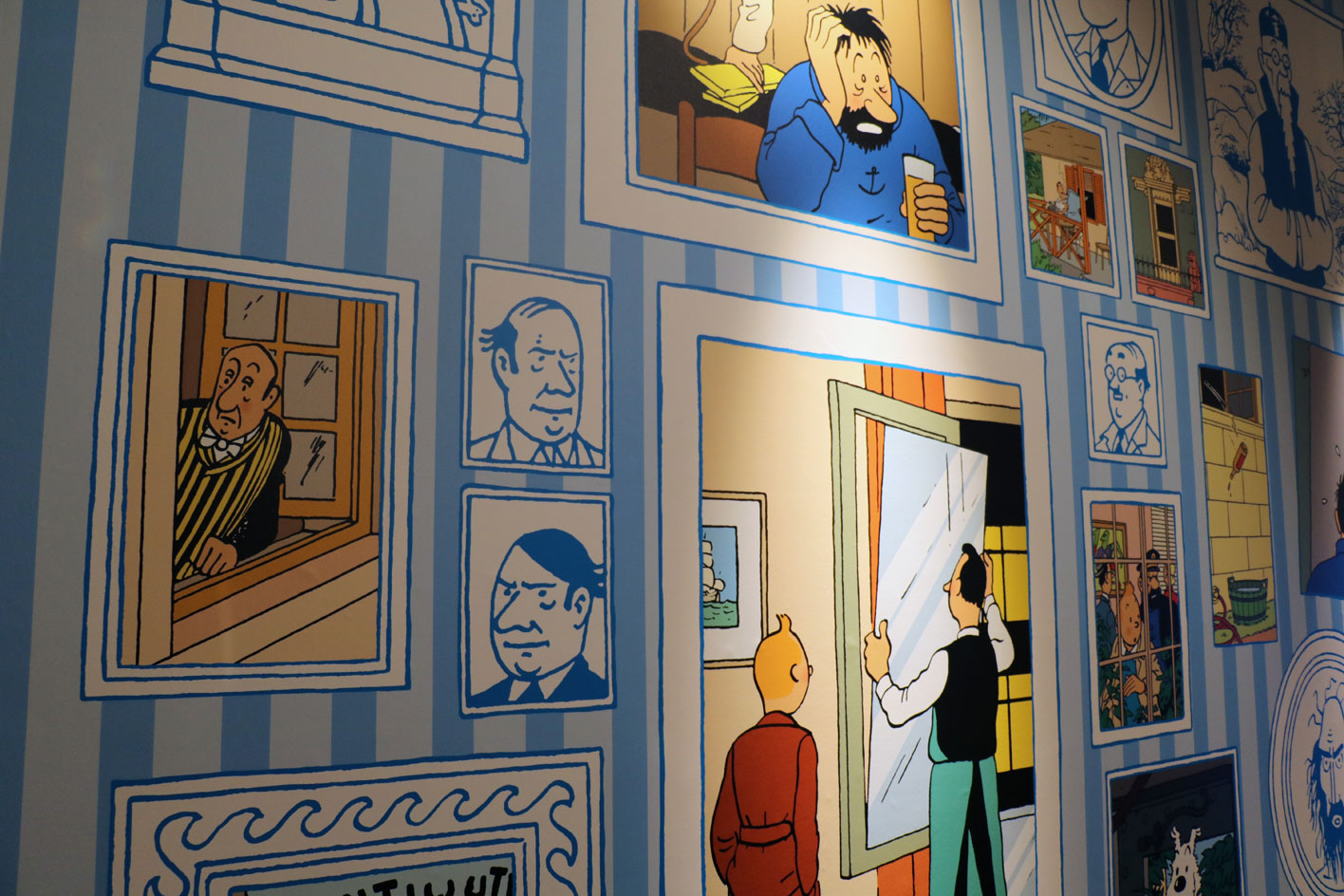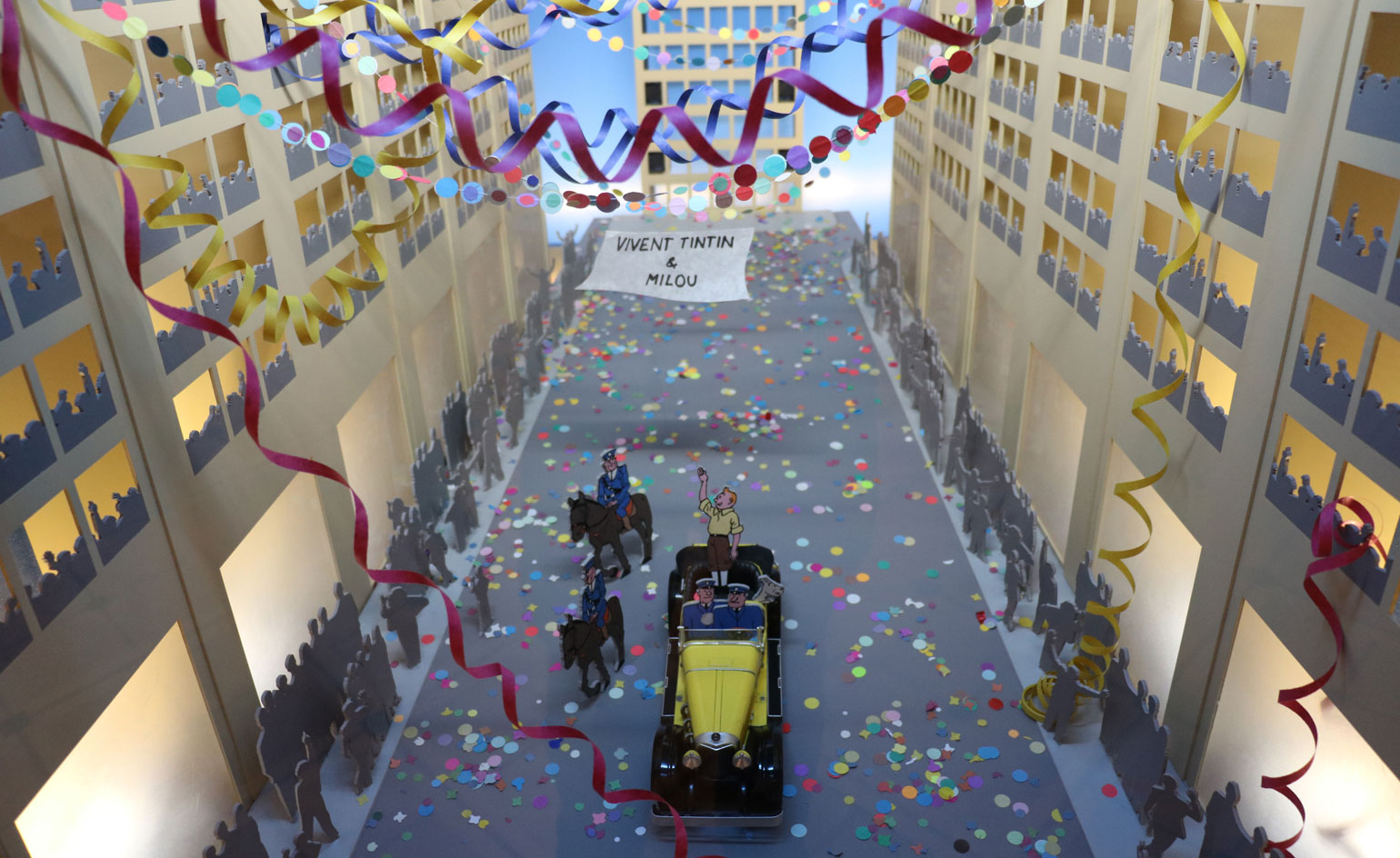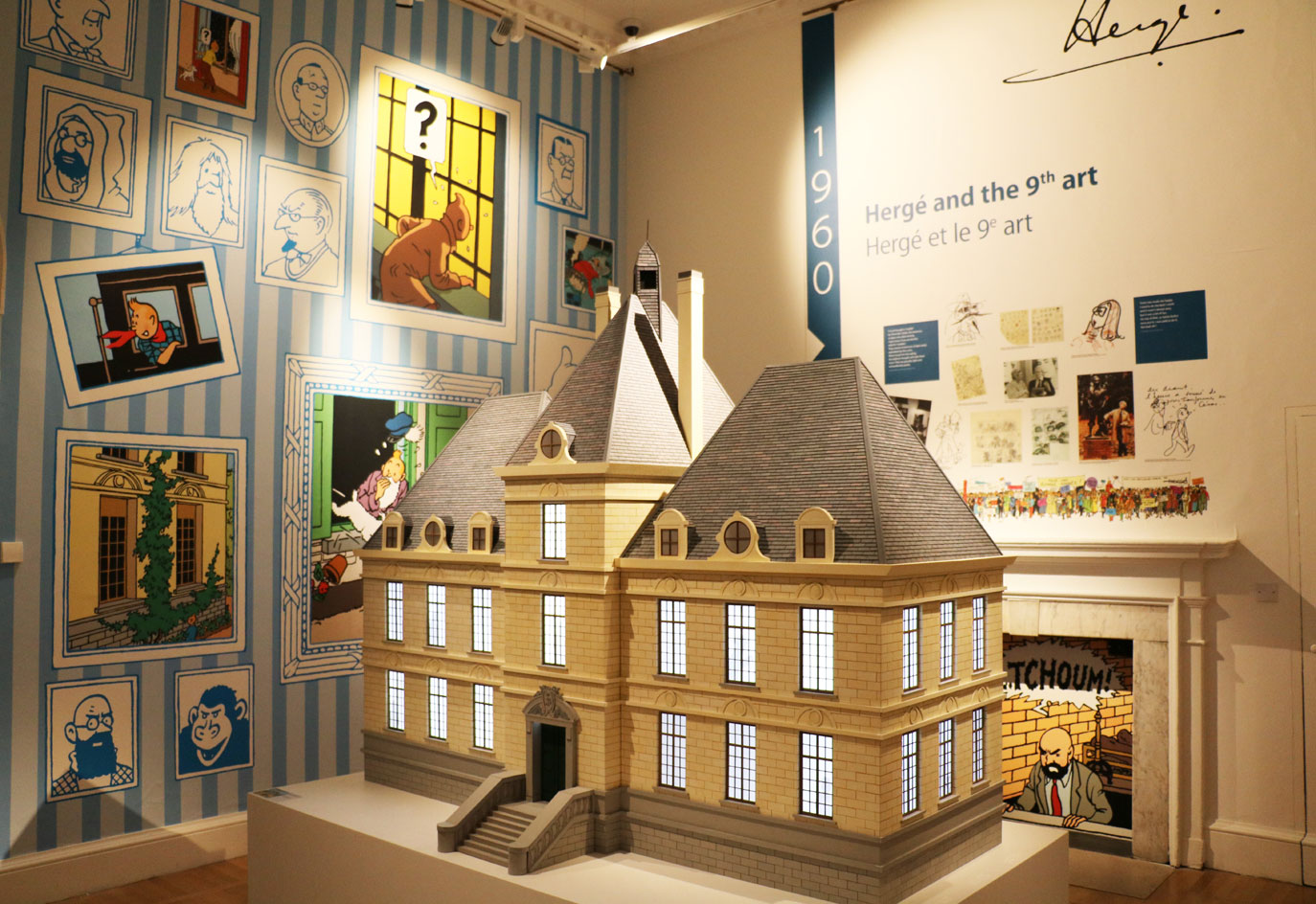Tintin forever: Somerset House hosts a new exhibition on Hergé's masterpiece
The overarching motif running through 'Tintin: Hergé's Masterpiece' – a small but perfectly formed new exhibition at Somerset House – is that of windows. The references are the most abundant of the show's many quiet insights into the work of Hergé, the late Belgian illustrator held so dear to many (not least Michael Farr, one of the globe's pre-eminent 'Tintinologists', an advisor on the show's curation and the raconteur guide to its preview).

The overarching motif running through 'Tintin: Hergé's Masterpiece' – a small but perfectly formed new exhibition at Somerset House – is that of windows.
They're ubiquitous: seen in the elegant endpapers of the books (or 'albums'), here reconstituted as the show's wallpaper; in the models and maquettes – of a Chicago boulevard, a twilit street and Captain Haddock's austere Marlinspike Hall – that act as the centrepiece of each of the three rooms; and strewn across the museum's actual windows, as vivid scenes set in vinyl.
The references are the most abundant of the show's many quiet insights into the work of Hergé, the late Belgian illustrator held so dear to many (not least Michael Farr, one of the globe's pre-eminent 'Tintinologists', an advisor on the show's curation and the raconteur guide to its preview).
'Hergé was fascinated by windows for the deeper, psychological meaning they can give to images and a story,' Farr explains. 'In storytelling, they can take the story further – a form of punctuation.' (Fireplaces play a similar function in Hergé's world.)
The exhibition – devised and designed by the Hergé Foundation and Somerset House – is roughly chronological, tracing Hergé's path from daydreaming boy scout doodling in the margins of his schoolbooks, through the discovery of his talents by an editorial secretary in the subscriptions department of the Belgian paper Le Vingtième. (He was in no small part responsible for the runaway success of the paper's Le Petit Vingtième children's supplement, and his job illustrating the regular paper's women's pages would later manifest itself in the embrace of modern fashions throughout the Tintin books.)
Next comes controversy (the blunt racial stereotyping seen in Tintin's Congo and American adventures isn't explored, though the exhibition includes a cover of Le Soir, the Nazi-operated Belgian paper that Hergé worked for during the occupation, subsequently garnering accusations of fascist sympathies), colourisation and extracurricular work – Hergé also, for a time ran an advertising design agency, here represented by neat contemporary advertisements for champagne and a flyer for a show by the French singer-showman Maurice Chevalier.
Perhaps the most interesting inclusions are the subtle hints of Hergé's draughtsman-like eye and passion for modern art that permeate the entire exhibition. In the second room, a large diorama of the ticker tape parade from Tintin in America highlights Hergé's sophisticated use of perspective in his strip frames; while an image of Snowy, spinning dervish-like, is 'pure Severini'. 'He was very aware of the futurists,' explains Farr. ' He loved to do this – to show that he knew contemporary artists.'
'Tintin: Hergé's Masterpiece' ends with a concise collection of frames and developmental drawings from Tintin's final outing – Tintin and Alph-Art, a post-modern treatise on typography and the worth of contemporary art, left unfinished due to Hergé's death from leukemia in 1983 – and a last sketch of the reporter, about to be transformed into a 'living statue' by the con artist Endaddine Akass. It's a poignant inclusion. The idea, Farr explains, was that 'Tintin would himself become a work of art, who would then be displayed in museums... possibly Somerset House' – an apt conclusion to a sweetly enlightening show.

The exhibition is roughly chronological, tracing Hergé's path from daydreaming boy scout doodling in the margins of his schoolbooks to global renown. Pictured: a large diorama of the ticker tape parade from Tintin in America highlights Hergé's sophisticated use of perspective.

A large maquette of Captain Haddock’s Marlinspike Hall – based on the Loire’s Château de Cheverny – is the centrepiece of the third and final room.

Though concise, the show is lovingly curated – exploring the way Hergé's personal interests permeated his work.

Windows are a ubiquitous theme: seen in the appropriated endpapers; in the models and maquettes; and strewn across the museum’s actual windows, as vivid scenes set in vinyl.

A young Hergé.

Hergé was a great fan of modern art – Andy Warhol even created four portraits of the illustrator.
INFORMATION
’Tintin: Hergé’s Masterpiece’ is on view until 31 January 2016. For more information, visit Somerset House’s website
ADDRESS
Somerset House (Terrace Rooms)
Strand
London, WC2R 1LA
Receive our daily digest of inspiration, escapism and design stories from around the world direct to your inbox.
Tom Howells is a London-based food journalist and editor. He’s written for Vogue, Waitrose Food, the Financial Times, The Fence, World of Interiors, Time Out and The Guardian, among others. His new book, An Opinionated Guide to London Wine, will be published by Hoxton Mini Press later this year.
-
 Terrified to get inked? This inviting Brooklyn tattoo parlour is for people who are 'a little bit nervous'
Terrified to get inked? This inviting Brooklyn tattoo parlour is for people who are 'a little bit nervous'With minty-green walls and an option to 'call mom', Tiny Zaps' Williamsburg location was designed to tame jitters
-
 Let’s hear it for the Chopard L.U.C Grand Strike chiming watch
Let’s hear it for the Chopard L.U.C Grand Strike chiming watchThe Swiss watchmaker’s most complicated timepiece to date features an innovative approach to producing a crystal-clear sound
-
 Form... and flavour? The best design-led restaurant debuts of 2025
Form... and flavour? The best design-led restaurant debuts of 2025A Wallpaper* edit of the restaurant interiors that shaped how we ate, gathered and lingered this year